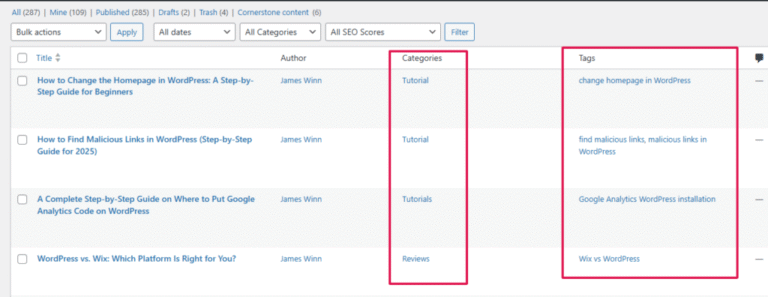The world of SEO has experienced a dramatic shift in recent years, and if you’re not keeping up, your website could be left in the dust. Google’s move to mobile-first indexing has changed the SEO game entirely. In a world where mobile usage is dominant, focusing solely on desktop SEO can significantly hinder your search rankings and traffic. This article delves into why mobile-first indexing matters, how it impacts your rankings, and what steps you can take to optimise your site for success.
What Is Mobile-First Indexing?
Contents
Mobile-first indexing means that Google primarily uses the mobile version of your website for indexing and ranking purposes. While Google used to crawl the desktop version of a site first, now the mobile version is prioritised, reflecting the surge in mobile internet usage. As of 2024, over 60% of global internet traffic comes from mobile devices, making this change critical for businesses that want to stay competitive.
In the past, web developers and SEO professionals primarily focused on creating a website that worked well on desktops, with mobile optimisation as an afterthought. But today, with Google’s mobile-first indexing, if your site doesn’t provide a seamless experience for mobile users, you risk losing visibility in search engine results.
Why Desktop SEO Isn’t Enough Anymore

While desktop optimisation still holds value, it’s no longer sufficient. Here’s why:
- Mobile Search Volume Dominates
The majority of search queries now come from mobile devices. This trend is even more pronounced in certain industries, such as retail and travel. Ignoring mobile SEO means missing out on the lion’s share of traffic, especially for eCommerce sites. A Trusted Shopify SEO Company: Impressive can help you ensure your eCommerce store is optimised for mobile, preventing lost opportunities and reduced conversions. - User Experience (UX) is Mobile-Centric
Google prioritises user experience as a ranking factor, and mobile usability is a huge part of this. Elements like mobile page speed, readability, and navigation directly impact how users interact with your site. Also, if a visitor lands on your website and encounters issues like slow loading times, hard-to-read text, or unclickable links on their phone, they’ll quickly bounce — signalling to Google that your page doesn’t provide a good user experience. - Mobile Optimisation Impacts Rankings
Sites that are not mobile-friendly are likely to suffer lower rankings. Google’s algorithms assess the mobile version of your site first, meaning that any problems, such as poor layout or slow performance on mobile, could drag your entire site down in the rankings — even on desktop searches.
How Mobile-First Indexing Affects SEO
Google’s mobile-first indexing can affect your website’s SEO in several ways. Here are some key impacts:
- Content Visibility: If your desktop and mobile versions differ significantly, with key content only appearing on the desktop site, that content might not be indexed or ranked as highly as you expect. Ensure all your valuable content is accessible on the mobile version.
- Crawling and Indexing: Google will predominantly crawl your mobile site. Any issues like slow load times, missing metadata, or blocked resources could harm your ability to get indexed properly.
- Mobile Speed as a Ranking Factor: Page speed has always been a critical element for SEO, but with mobile-first indexing, mobile speed is now a key ranking factor. A slow mobile experience is penalised by Google, making it crucial to optimise your site’s mobile performance.
Steps to Optimise for Mobile-First Indexing
If your site hasn’t been fully optimised for mobile-first indexing, now is the time to act. Here are some practical steps you can take:
- Responsive Web Design
Use a responsive design that automatically adapts to different screen sizes. This approach ensures that your content, images, and overall site layout work seamlessly on both desktop and mobile devices. If your site still uses a separate mobile version (m.example.com), it’s time to switch to a responsive design to avoid inconsistent user experiences and SEO issues. - Optimise for Mobile Speed
Google favours fast-loading mobile pages. You can improve your mobile speed by compressing images, reducing server response times, and enabling browser caching. Also, tools like Google’s PageSpeed Insights can help identify specific areas that need improvement. - Focus on Mobile User Experience (UX)
Ensure your mobile site is easy to navigate, with readable text, touch-friendly buttons, and intuitive navigation. Make sure that critical features. Such as forms and contact buttons, work flawlessly on mobile devices. A site that’s difficult to use on mobile will frustrate users and lead to higher bounce rates. - Check Your Mobile Content
Avoid hiding content from mobile users. All important text, images, and videos that you want to rank should be present on the mobile version of your site. Elements that are only available on desktop could end up ignored by Google’s indexing system. - Test Your Site on Mobile Devices
Regularly test how your site looks and functions on different mobile devices and screen sizes. Google’s Mobile-Friendly Test tool can be a great asset for ensuring your site is optimised for mobile-first indexing.
The Future of Mobile SEO

As mobile-first indexing becomes the new norm, websites that fail to prioritise mobile optimisation will continue to lose ground. The shift towards mobile isn’t just about keeping up with the latest trends — it’s about staying relevant in a market that’s evolving rapidly. Businesses that rely heavily on organic traffic must prioritise their mobile presence, from eCommerce to service-based websites.
Working with an SEO Company, for instance, can help ensure that your mobile SEO efforts are strategic and effective. With the right guidance, you can build a mobile-optimised site that not only ranks well but converts visitors into customers.
Mobile-first indexing has fundamentally changed how SEO works. Your desktop site is no longer the priority — mobile is. If you haven’t yet optimised your website for mobile-first indexing, you’re likely missing out on valuable traffic and potential customers. Focus on creating a fast, responsive, and user-friendly mobile experience to improve your rankings, and your business will be well-positioned to succeed in today’s mobile-centric world.
Taking the time to address mobile-specific SEO challenges now can make a significant difference in your site’s performance, visibility, and user satisfaction in the long term





